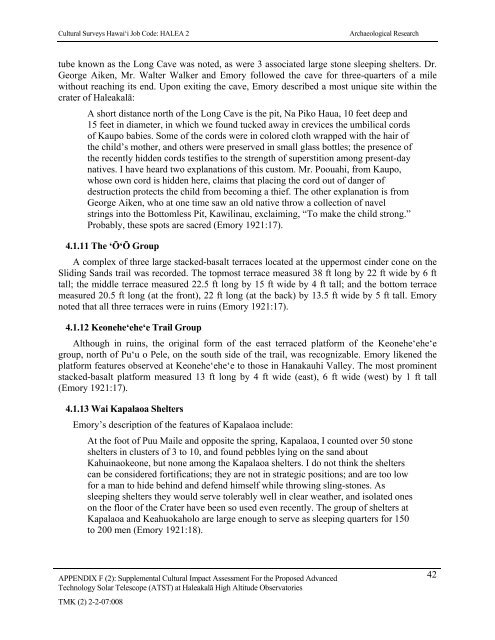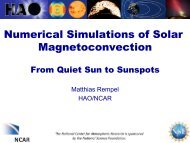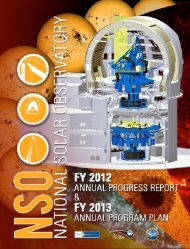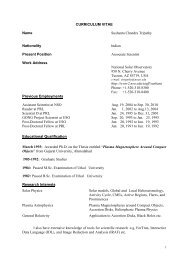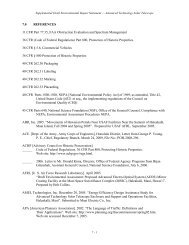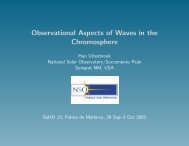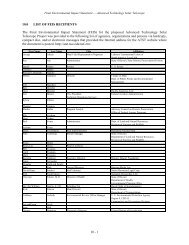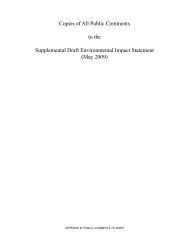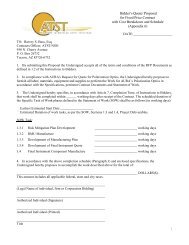Cultural Surveys Hawai‘i Job Code: HALEA 2Archaeological ResearchLocated 200 ft to the south, an area measuring 6 ft square and less than a foot high, wasdescribed as “paved with stones”. The stones were removed “to make sure that they concealed nocrack or opening in the lava”. No cultural deposits were found.The last of the related structures was located 100 ft eastward on the very edge of the aa flow.The structure was described as a platform measuring 3 ft by 5 ft by 3 ft high.4.1.8 Kihapi‘ilani RoadThe southern portion of the aa clinker flow from Dante’s Inferno was traversed by an ancientHawaiian road. Emory was able to trace its course over the aa flow, but lost it where it crossedthe loose cinders. It measured 6 to 8 ft wide and was paved with blocks of aa basalt. Accordingto Emory’s informants, the road was supposed to have gone around the base of Mamani Hill,through the Hanakauhi Valley, above Mauna Hina cone, and along the Kalapawili Ridge to thepond Wai Ale on the outside slope of Haleakalā, where Kihapi‘ilani was said to have built a damto hold the waters of the pool. Emory’s informants stated that water-worn pebbles had beenfound above Mauna Hina and along Kalapawili Ridge (Emory 1921:15).4.1.9 “Dante’s Inferno” GroupLocated along an aa clinker flow from the volcanic vent, pre-contact historic propertiesresident consisted of a complex of three stacked-basalt terraced platforms. The first twostructures, the east and west platforms were recorded 36 feet apart. The east platform measured14 ft long by 3.5 ft wide by 1.5 ft high. The west platform measured 10 ft long by 5 ft wide by 2ft high. Located 75 feet northwest of the east platform, a structure recorded as the northwestplatform was measured as 8 ft long by 3.5 ft wide by 1 ft high (Emory 1921:15).4.1.10 Keahuokaholo GroupA stacked-basalt structure, described by Emory as a “curved stone wall” was recorded atKeahuokaholo, at a point where a ridge of red cinder emanating from Pu‘u Maui crossed theHalemau‘u trail at the midpoint of the Ko‘olau Gap. Near this point and alongside of the trailwas a curved stone wall that measured 34 ft long by 4.5 ft wide by 3.5 ft high. The red cinder haddrifted to a height that nearly covered the middle of the construction. One hundred and fifty feetsoutheast of the wall was an ahu measured 3 by 4 feet (Emory 1921:16).At the ridge of Keahuokaholo, between 40 and 50 stacked-basalt ahu were recorded within aradius of one hundred yards. East of the entrance of the trail from Halāli‘i, 28 stone shelters werenoted. Within the shelters, a total of 15 water-worn pebbles were collected. Five had been laidtogether next to a ruined shelter. Emory noted as many ahus and shelters north of the entrance assouth of it. A stacked-basalt platform noted at the north entrance measured 9 ft by 3.5 ft by 1.5 fthigh.Another 50 small ahus were located at the west border of Keahuokaholo. Ruins of a platformwere noted 100 ft to the south and another, measuring 3.5 ft by 12 ft, was located 300 ft to thenortheast on the edge of a ravine. Located 200 ft further northeast a large flat rock, 3 ft high, wascovered by a single layer of rough stones.A few hundred yards from Keahuokaholo on the Leleiwi trail, a stacked basalt platform 3.5 ftwide and 12 ft long, built of thin slabs of aa clinker, was recorded. A half-mile further, the lavaAPPENDIX F (2): Supplemental Cultural Impact Assessment For the Proposed Advanced 41Technology Solar Telescope (<strong>ATST</strong>) at Haleakalā High Altitude ObservatoriesTMK (2) 2-2-07:008
Cultural Surveys Hawai‘i Job Code: HALEA 2Archaeological Researchtube known as the Long Cave was noted, as were 3 associated large stone sleeping shelters. Dr.George Aiken, Mr. Walter Walker and Emory followed the cave for three-quarters of a milewithout reaching its end. Upon exiting the cave, Emory described a most unique site within thecrater of Haleakalā:A short distance north of the Long Cave is the pit, Na Piko Haua, 10 feet deep and15 feet in diameter, in which we found tucked away in crevices the umbilical cordsof Kaupo babies. Some of the cords were in colored cloth wrapped with the hair ofthe child’s mother, and others were preserved in small glass bottles; the presence ofthe recently hidden cords testifies to the strength of superstition among present-daynatives. I have heard two explanations of this custom. Mr. Poouahi, from Kaupo,whose own cord is hidden here, claims that placing the cord out of danger ofdestruction protects the child from becoming a thief. The other explanation is fromGeorge Aiken, who at one time saw an old native throw a collection of navelstrings into the Bottomless Pit, Kawilinau, exclaiming, “To make the child strong.”Probably, these spots are sacred (Emory 1921:17).4.1.11 The ‘Ō‘Ō GroupA complex of three large stacked-basalt terraces located at the uppermost cinder cone on theSliding Sands trail was recorded. The topmost terrace measured 38 ft long by 22 ft wide by 6 fttall; the middle terrace measured 22.5 ft long by 15 ft wide by 4 ft tall; and the bottom terracemeasured 20.5 ft long (at the front), 22 ft long (at the back) by 13.5 ft wide by 5 ft tall. Emorynoted that all three terraces were in ruins (Emory 1921:17).4.1.12 Keonehe‘ehe‘e Trail GroupAlthough in ruins, the original form of the east terraced platform of the Keonehe‘ehe‘egroup, north of Pu‘u o Pele, on the south side of the trail, was recognizable. Emory likened theplatform features observed at Keonehe‘ehe‘e to those in Hanakauhi Valley. The most prominentstacked-basalt platform measured 13 ft long by 4 ft wide (east), 6 ft wide (west) by 1 ft tall(Emory 1921:17).4.1.13 Wai Kapalaoa SheltersEmory’s description of the features of Kapalaoa include:At the foot of Puu Maile and opposite the spring, Kapalaoa, I counted over 50 stoneshelters in clusters of 3 to 10, and found pebbles lying on the sand aboutKahuinaokeone, but none among the Kapalaoa shelters. I do not think the shelterscan be considered fortifications; they are not in strategic positions; and are too lowfor a man to hide behind and defend himself while throwing sling-stones. Assleeping shelters they would serve tolerably well in clear weather, and isolated oneson the floor of the Crater have been so used even recently. The group of shelters atKapalaoa and Keahuokaholo are large enough to serve as sleeping quarters for 150to 200 men (Emory 1921:18).APPENDIX F (2): Supplemental Cultural Impact Assessment For the Proposed Advanced 42Technology Solar Telescope (<strong>ATST</strong>) at Haleakalā High Altitude ObservatoriesTMK (2) 2-2-07:008


